Fake coins - Moruzzi Numismatica Roma
Main menu:
- An introduction to numismatics and collecting
- Abbreviations concerning coins
- Collecting ancient coins in Italy
- State of preservation of coins
- The rarity
- Numismatic bibliography
- False coins
- Plated coins
- The Roman woman in the portraits of the Augustae
- Roman tesserae with numerals and Spintriae
- The Ara Pacis
- The temple of Janus
- Domitianus
- A solidus of Jovinus
- International Coins
Fake coins
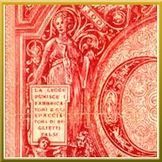
The falsification to defraud the circulation
The problem of coins and banknotes falsification is particularly widespread all over the world. Since ancient times, when money substituted the barter system, many false coins were produced and issued into circulation. Nowadays this is still a problem, above all with regard to banknotes and other payment systems (as credit cards). Thwarting this practise is an attitude present in all legislations. In many countries there are police groups specifically involved in the repression of this phenomenon. We mention here the Secret Service in USA and the Special Unit Currency Police in Italy - GAM of Guardia di Finanza. Counterfeit coins and banknotes no longer in circulation became also objects of study and collecting because of their multiple interests.
In Italy this offence is provided in the Penal Code among crimes against the public faith and in particular in the articles 453 and following (coins falsification, spending and introduction into the State, with complicity, of counterfeit money). It's punished with imprisonment from three to twelve years and with a fine between one million and six million of lire. The law ratifies 1) anyone who counterfeits national or foreign coins, having legal tender in the State or outside; 2) anyone who modifies in any way genuine coins, giving them the appearance of higher value; 3) anyone who, even if not participating in the counterfeit or in the alteration, is a partner in crime as an intermediary, introducing into the territory of the State, possessing, spending or putting counterfeit or altered coins into circulation; 4) anyone who, in order to put them in circulation, acquires or receives counterfeit or altered coins from a counterfeiter.
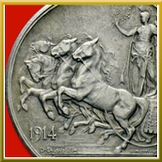
The falsification to defraud the antiquarian market
In the matter of collection coins and banknotes, the falsification already started in the Renaissance period with the birth of the numismatic collecting. In order to complete the collections with "missing pieces", fakes were artfully created.
This is an old story. Nowadays the phenomenon took a more criminal connotation and the falsification quality has improved to a point that you have to consult an expert to discern the true from the false one. The old fakes - for example the ones created during the Renaissance - became today documents of that period and therefore subjects of major interest. The other are just dangerous imitations that can turn into objects of fraud in sales if proposed as genuine.
In Italy this offence is included among the crimes against property by fraud and contemplated by the article 640 Fraud "Anyone who prompts someone in error with artifices or deceits, causing him or others an unfair profit prejudicing other people's, is punished with imprisonment from six months to three years and with fine between one hundred thousand and two millions of lire. The jail sentence is from one to five years and the fine is from six hundred thousand to three millions of lire if: 1) the act is committed against the State or another public institution or on the pretext of exempt anyone from the military service; 2) the act is committed causing the victim the fear of an imaginary danger or the erroneous belief of having to execute an Authority order. The crime is punished under complaint of the victim, except for certain circumstances provided in the preceding paragraph or any other aggravating circumstance".
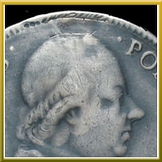
The alteration of copies to make them more desirable in the collecting market
The great attention to numismatic collections developed a phenomenon of original copies alteration in order to improve their quality making them more desirable on the antiquities market.
However, today the word of collectors is not in favour of these alterations, although valuing each of them in a different way.
So the removal of a hook, the closing holes, the facing of the coin funds, the addition of an artificial patina, the reconstruction of the hair of a portrait worn for the burin, the alterations of the legends are challenged in trade unless clearly indicated.
The verification of the possible presence of these alterations are often matter of surveys.
Even this problem is set by the Italian law in the article 640 Fraud "Anyone who prompts someone in error with artifices or deceits, causing him or others an unfair profit prejudicing other people's, is punished with imprisonment from six months to three years and with fine between one hundred thousand and two millions of lire. The penalty of imprisonment is from one to five years and the fine is from six hundred thousand to three millions of lire: 1) if the act is committed against the State or another public institution or on the pretext to exempt anyone from the military service; 2) if the act is committed causing the victim the fear of an imaginary danger or the erroneous belief of having to execute an Authority order. The crime is punished under complaint of the victim, except for certain circumstances provided in the preceding paragraph or any other aggravating circumstance".
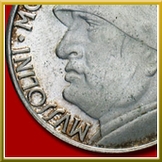
Inventions
Both in the past and in the present, the forger operates also creating inexistent types or changing real ones to defraud the gullible collector. For example we can mention the case of a forger who, when the euro was put into circulation in 2002, created a banknote of 300 euro that didn't correspond to any note really issued, but that could be "accepted" as not everyone knew the denomination of the new exchange. In some cases, however, these creations are well engineered and should not be underestimated.
If coins have legal tender or not, are applied the articles 453 and following of the Penal Code: falsification of coins, spending and introduction into the State, with complicity, of counterfeit money. It's punished with imprisonment from three to twelve years and with a fine between one million and six million of lire; 1) anyone who counterfeits national or foreign coins, having legal tender in the State or outside; 2) anyone who modifies in any way genuine coins, giving them the appearance of a higher value; 3) anyone who, even if not participating in the counterfeit or in the alteration, is a partner in crime as an intermediary, introducing into the territory of the State, possessing, spending or putting counterfeit or altered coins into circulation; 4) anyone who, in order to put them in circulation, acquires counterfeit or altered coins or receives them anyhow from the person who falsified, that is an intermediary or in the Fraud contemplated in the article 640: Anyone who prompts someone in error with artifices or deceits, causing him or others an unfair profit prejudicing other people's, is punished with imprisonment from six months to three years and with fine between one hundred thousand and two millions of lire. The penalty of imprisonment is from one to five years and the fine is from six hundred thousand to three millions of lire: 1) if the act is committed against the State or another public institution or on the pretext to exempt anyone from the military service; 2) if the act is committed causing the victim the fear of an imaginary danger or the erroneous belief of having to execute an Authority order. The crime is punished under complaint of the victim, except for certain circumstances provided in the preceding paragraph or any other aggravating circumstance.
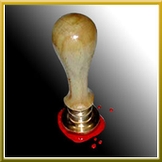
The falsification of certifications
The antiquarian market "defends" itself against falsifications through the numismatic experts certifications, which certificate the authenticity and the preservation status of various copies. The attention of the forger is also directed to the same certificates, creating fakes certificates or cleverly substituting a newly certificated coin. To fight this practise, the measures taken consist in aligning the certificated coin with its high-resolution images in order to permit the verification of the certification.
In this case, in addition to the Fraud contemplated in the article 640: "Anyone who prompts someone in error with artifices or deceits, causing to him or to others an unfair profit prejudicing other people's, is punished with imprisonment from six months to three years and with fine between one hundred thousand and two millions of lire. The penalty of imprisonment is from one to five years and the fine is from six hundred thousand to three millions of lire: 1) if the act is committed against the State or another public institution or on the pretext to exempt anyone from the military service; 2) if the act is committed causing the victim the fear of an imaginary danger or the erroneous belief of having to execute an Authority order. The crime is punished under complaint of the victim, except for certain circumstances provided in the preceding paragraph or any other aggravating circumstance" is added that concerning the falsification of documents, article 485, Falsification in private deed: "Anyone who creates in whole or in part a false private deed, or alters a true one, in order to procure a profit for himself or for others or in order to cause damages to others, is punished in case he uses or others use it, with imprisonment from six months to three years. Are also considered alterations the additions falsely affixed on a real deed, after it was finally formed".
The perceived ideas of an individual are unique and a logical product of different and personal impressions. Although a great deal of intellectual comment is placed freely on the internet, it should not be forgotten that there are moral and legal obligations with respect to the plagiarising of text without the consent of the author. Copyright Moruzzi Numismatica © 1999-2017